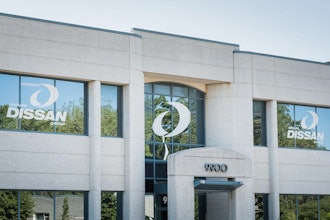This article originally appeared in the July/August 2012 issue of Industrial Distribution. To view it in its original format, click here.
NAW (National Association of Wholesaler-Distributors) recently announced its newest available book: Effective Sales Incentive Design for Distributors: What’s the Right Plan? Authors Mike Emerson and Steve Deist, both of Indian River Consulting Group, have filled this book with actionable steps, detailed information and formulas on sales compensation structures and mechanisms, and plenty of case studies from the front lines of the wholesale distribution industry. Effective Sales Incentive Design for Distributors: What’s the Right Plan? is designed for top wholesale distribution executives and sales managers who are looking for the answer to this question: “How can I get my sales reps to just do what I want them to do?”
Mike Emerson sat down with Industrial Distribution to discuss the book and why it’s not just about theories; it’s about practical experience. Mike began his career at Indian River Consulting Group (IRCG) in 1997 and has worked with hundreds of distributors and manufacturers of all sizes and within many lines of trade. He has managed a broad array of IRCG projects. His main focus areas include: compensation design, strategy facilitation, market research, and data modeling and analysis.
ID: Can you give us a brief overview of what the book is about, and what motivated you and Steve to write it?
ME: This is our sixth book for NAW. In 2003, the first book we wrote for NAW was on sales compensation. That book did pretty well and we got a lot of positive feedback on it. The book was very research-based, and we looked at a lot of data. We surveyed distributors, trying to find correlations between companies who were gaining market share, and how they paid their salespeople. One thing we learned was that there isn’t really a correlation between how you structure a commission program or what percentage a salesperson is receiving in salary, and how well the company is doing financially. One of the findings that came out of that research was not what we thought it would be — which was a statistical correlation — but the importance of alignment. The relationship of how salespeople are paid and what the company’s goals are seemed to be the differentiator between successful companies and those that weren’t successful.
The feedback we got was that the concept of alignment was very powerful, and there was a desire from distributors to have us dive deeper into that. So the new book doesn’t cover the same ground as the old one, but it sort of ‘bookends’ it. The first half of the new book really talks about that alignment concept, and the work we’ve done, the experiences we’ve had, and the processes that we’ve used to help companies develop and ensure that they know where they’re providing value, what their strategy is, and what their target markets are. It goes on to talk about structuring a sales organization to ensure that there is enough human resources focus on the strategy and target business objectives. That’s the first part: really picking up on the alignment concepts from the first book.
The second half of the book talks about the incentive structures to gain that alignment. The structures focus on alignment and range from rather simplistic to somewhat sophisticated. When I say sophisticated, I don’t necessarily mean complex; it’s just using different mechanisms based on what a company is trying to accomplish.
ID: Is there anything that is specific about distribution that differs from other sales-based organizations? More specifically, does distribution face a set of challenges or critical issues that you don’t see elsewhere?
ME: There are two unique things about distribution. One is that distributors are very flexible. They don’t have to invest in property, plant, and equipment to the degree that a manufacturer has to. A wholesale distributor can change its focus a lot quicker than someone who has invested millions of dollars in tooling. So a distributor has a lot more flexibility, which means its reaction time to changing market conditions must be a lot shorter. The other thing is the economics are different between other businesses and a distributor — especially a manufacturer and a distributor. Manufacturing economics is driven by asset utilization, and the more you sell, the more your incremental profit increases. That economic paradigm really doesn’t apply to distribution because they’re not absorbing overhead as they produce widgets.
So selling twice as much when you’re a manufacturer means you’re probably making four times more money. But if you’re a distributor and you sell twice as much, you’re maybe making twice as much, maybe not. This means distributors must have a very strong customer focus.
ID: Coming off the first book, you said you received a lot of feedback from distributors. More specifically, what kinds of things were they saying?
ME: The feedback we got was in two areas. One was consistent with the questions we’re always asked, which is, ‘how do I get my sales reps to do what I want them to do?’ That is, fundamentally, the question that underlies the premise that ‘I need to change my sales compensation program because I’m getting this behavior and these results from my current compensation program. Salespeople are motivated by money, so if I change how I pay them, I will get different results. So how do I change the pay program?’ That’s the logic that drives a lot of people into looking at sales compensation. Some of this feedback you can take at face value. You can look at it and say ‘Well, you’re paying salespeople a flat percentage of gross profit, and if you were a salesperson, would you be more focused on maintaining the gross profit that you have — versus going out and getting more gross profit —if you were at a place in your life where you were happy with your standard of living?’ I think the answer for most people is ‘Yes, I would be more focused on maintaining existing business.’ If you want to grow your business and you have a compensation program that reinforces the status quo, then there are some changes that can be made to your sales compensation program to put more of an emphasis on growth.
The other scenario is around having clarity on what it is that you really want your salespeople to do. This scenario is characterized by not being able to identify alignment, because the salesperson’s role is amorphously defined by ‘I want them to sell more stuff.’ Sometimes the questions need to be, ’Do you think they need to be selling more stuff to your existing customer base? Are there product lines that are being underrepresented? Do we need more customers?’ If these questions generate a blank stare, the right thing to do is not to change the compensation program, rather to take a sobering view of where a company is headed and where those growth opportunities are. Unfortunately, in some instances, companies have advocated their strategy to their sales force. Their sales force can figure out where they can sell stuff, but when you do that, you’re sub-optimizing; you’re disjointed, and you’re certainly not leveraging the collective energy of the company to attack in a more focused manner. In those instances, we’ve helped a lot of companies walk through where they can focus because they may have a stronger value proposition.
ID: Is there a next logical step to this series?
ME: I don’t think we’ll ever be done. The really cool thing is that we have a lot of liberty in terms of what we want to write about. The pattern that’s emerged is that we will continue to practice as consultants and start seeing patterns with companies that are struggling, and typically that will be the theme of our next book. The book that immediately preceded this one was called Value Creation Strategies, which talked about some misperceptions of wholesale distribution. Part of that was based on our experiences working with both private equity firms and manufacturers, and just recognizing that there is kind of a disconnect in terms of what distribution is... That they are not trucking companies. Distribution companies are not something where you want to take an army of Six Sigma black belts and just beat the inconsistencies out of the business. Manufacturers make money by doing the exact same thing over and over and over — zero defects type of stuff. Distributors make their money through mass customization and through changing their service offering to fit specific customers. So flexibility is critical. We don’t have it on the drawing room table, but there will certainly be another book coming based on evolving issues that we start seeing in the next year or so.
ID: So, ultimately, why should our readers buy your book?
ME: The book is very ‘how to’ and actionable, but it provides very broad context. It looks at compensation in a business context. We hope that the thoughts and the processes that are contained within the book are helpful driving some of the results your readers are looking for, because they will be able to properly diagnose which area they should attack first in terms of strategy, organizational structure, or sales compensation. It will also provide them with the ability to ensure that there is alignment throughout the entire company, from how people are paid to what their job responsibilities are. It’s not a niche book that’s very narrow and focused in one area. It’s very actionable and broad in the context of a distributor’s business .
For more information, or to order a copy, visit the book’s page on the NAW website: www.naw.org/effecsalesincentived


















